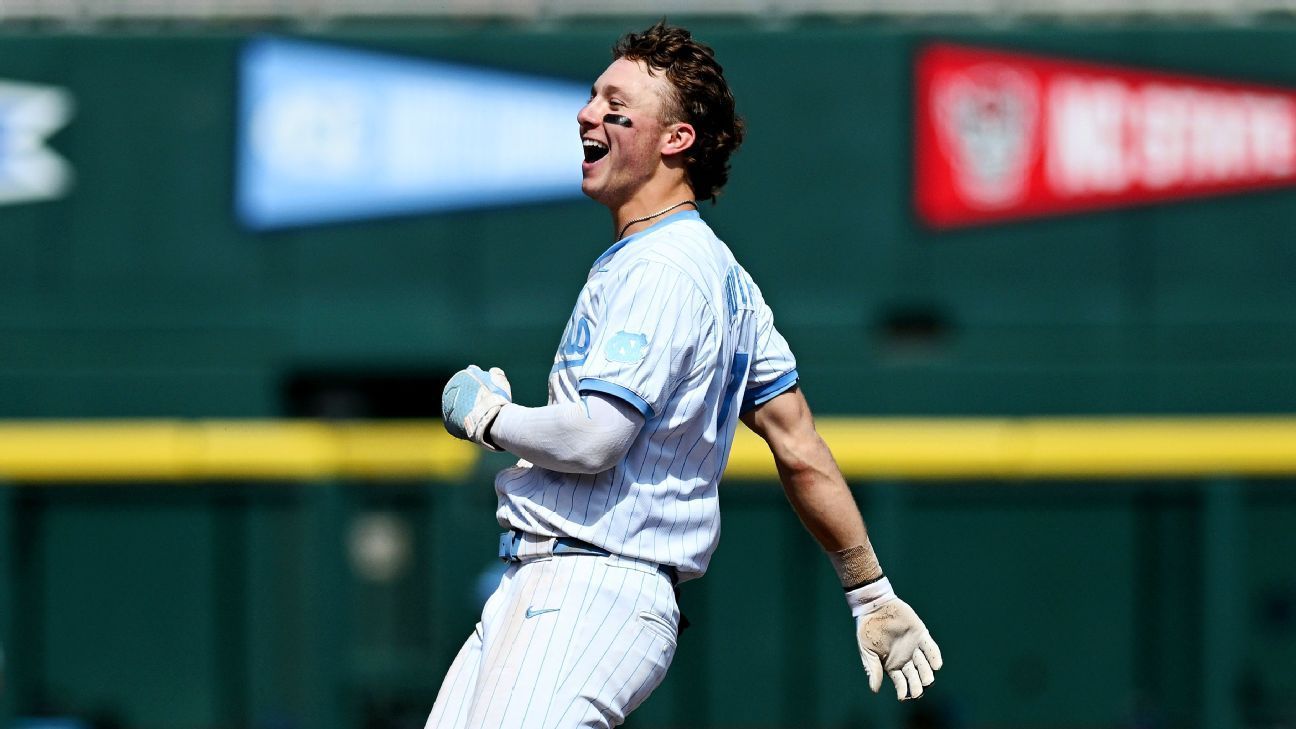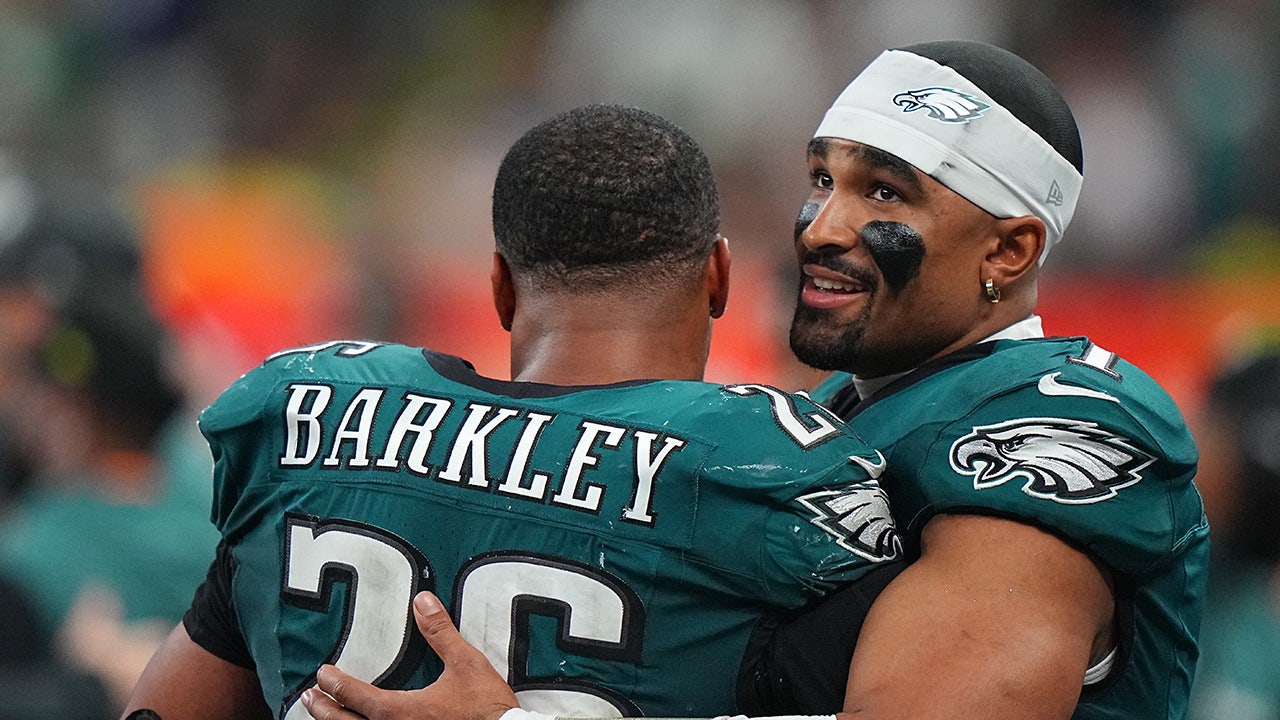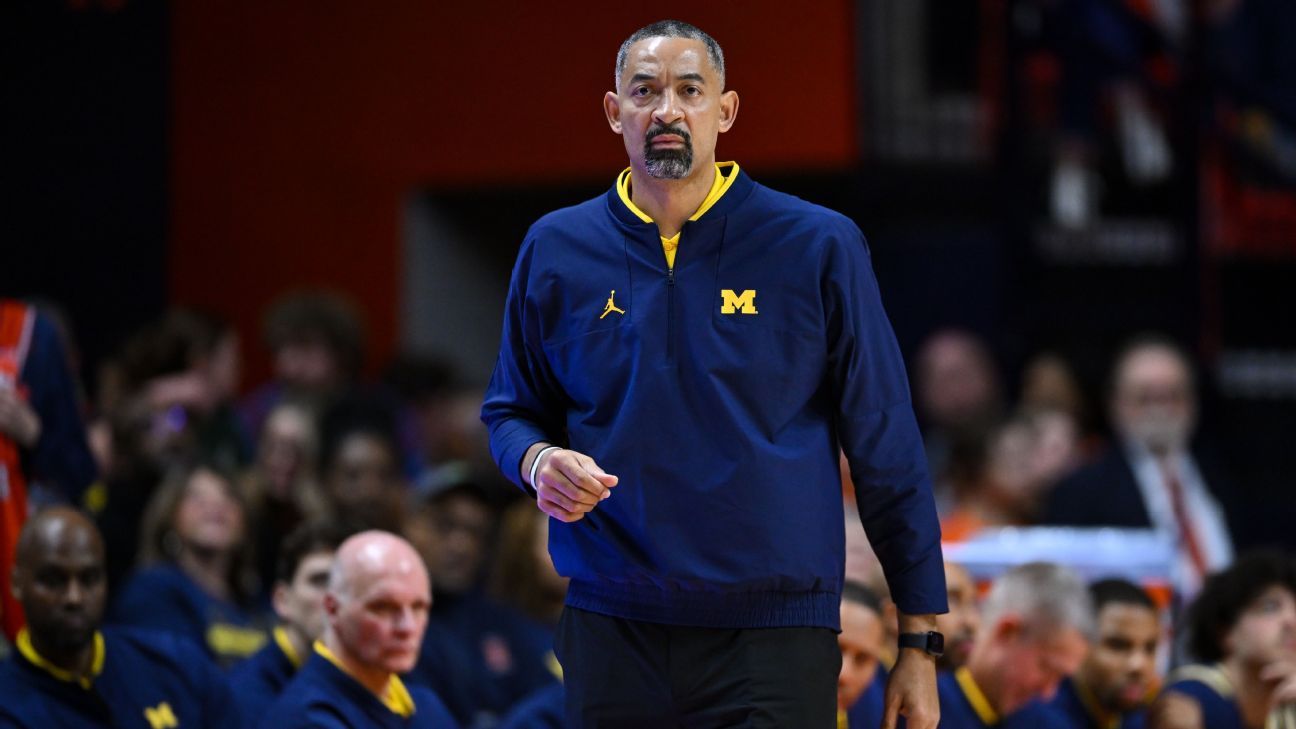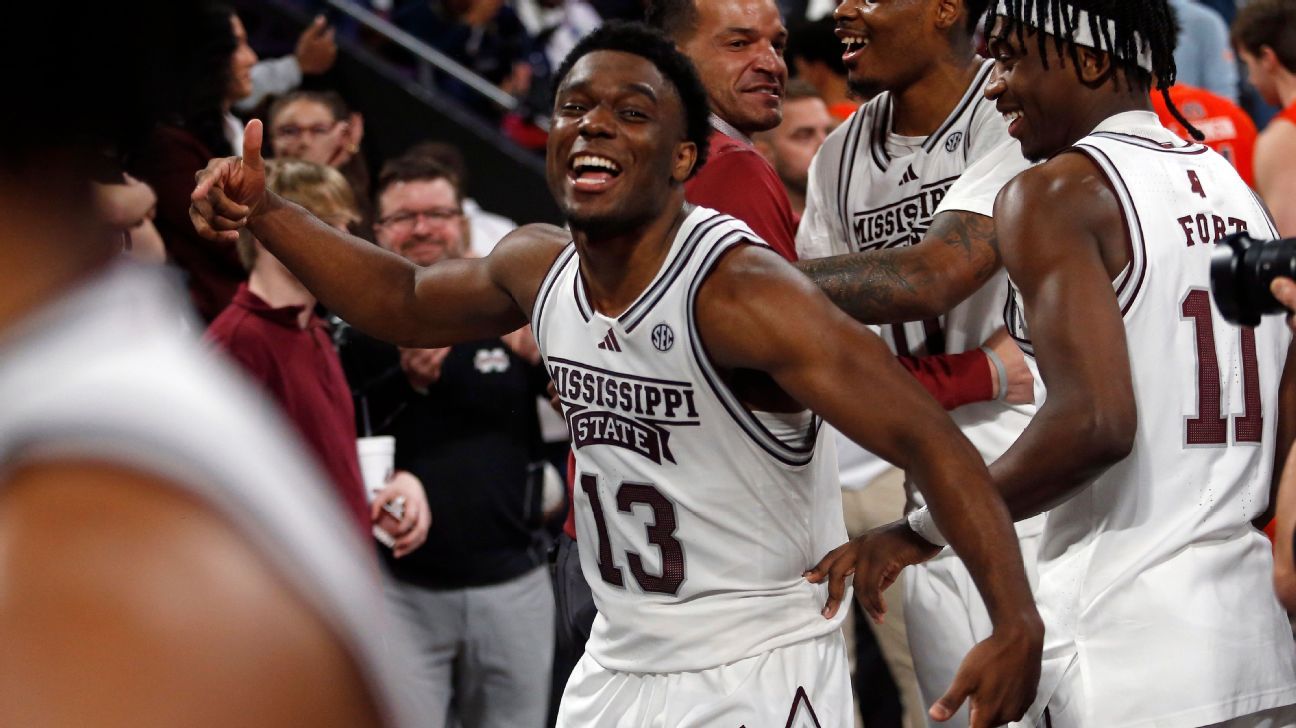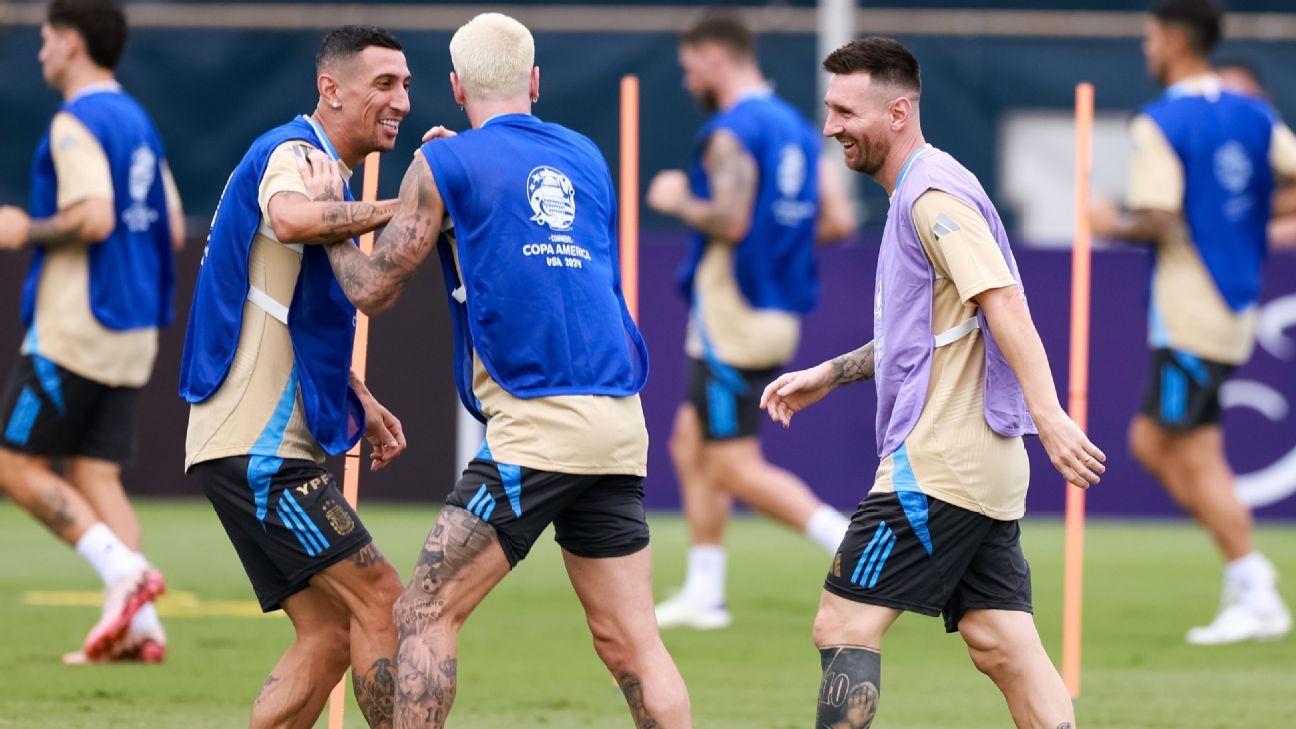His name is worthy of a soap opera star: Vance Honeycutt, and upon his arrival into this world, his father exclaimed: “He's here.”
The son of a former University of North Carolina baseball player and a UNC middle-distance runner, Honeycutt was the quarterback for his high school football team in Salisbury, North Carolina. He also kicked, but he didn't have to do it as much. In the playoff semifinals of his senior year, Honeycutt was placed at safety on the last defensive position in the game. He deflected the final pass attempt. Just before Salisbury's state championship, an assistant coach asked the head coach if he was nervous. Of course he wasn't. Honeycutt scored five touchdowns and was named MVP.
Honeycutt chose baseball, and the legend grew. He performed so many late-game heroics at North Carolina that Tar Heels fans nicknamed him “Honeyclutch.” He led North Carolina to the Men's College World Series last month, beating Virginia in the opener and accounting for 38 percent of his team's runs during the NCAA tournament.
The 21-year-old right fielder is arguably the most talented player in the 2024 MLB draft, which will be held Sunday through Tuesday in Fort Worth, Texas. Honeycutt can run from home plate to first base in 3.63 seconds and is a potential Gold Glove winner. He crushed 28 home runs this season and set a Tar Heels career record with 65 homers.
He may be the biggest wild card of the first round, though. Before the age of analytics, perhaps Honeycutt wouldn't be such an enigma and the 6-foot-3, 205-pound center fielder who oozes athleticism would be an early pick without hesitation. After a season of superlatives, the top-notch runner with a top-notch arm and potentially top-notch power is hampered by one big negative: his strikeout rate.
While Honeycutt's production soared last season (he hit .318 with 70 RBIs and a 1.124 OPS to go along with 28 stolen bases), he struck out 83 times in 62 games, and his strikeout rate was as high as 27.5% (he'll strike out 20.4% of the time in 2023).
“He's one of those players that, if everything goes right, you'll wonder how he wasn't drafted in the top 10,” one National League scout said. “But I don't know if he's going to hit. There are too many missed swings right now, and when he cut back on that last year, he played poorly.
“The tools are really good. He's fast. He catches everything. He's got power. I could see him being like [Tampa Bay Rays outfielder] José Siri with more walks.”
Those who have watched Honeycutt perform in so many crucial situations, without showing even a hint of outward distress, don't seem too concerned about the analysis or where he might land this weekend.
How could it fail?
“Honestly, they don't make players like Vance Honeycutt often enough,” said Carson Herndon, who coached Honeycutt in baseball and football at Salisbury.
“He's just a special kid.”
Honeycutt's parents met on a baseball field, of all places. As children, they played together in Little League.
Leah Ann went on to run on an ACC champion track team in the late 1980s, and Bobby played on a Tar Heels team that made it to the MCWS. They had two athletic daughters — Kayla was a North Carolina state champion tennis player and Julia played soccer at UNC Charlotte — and Vance quietly followed them around.
He said he inherited his even-tempered nature from his father, but Bobby Honeycutt is certain the athleticism came from elsewhere.
“Mom,” he said.
Vance Honeycutt was a late bloomer, about 5-foot-7 and 110 pounds when he started high school. When his body finally developed, the COVID-19 pandemic brought everything to a screeching halt.
Herndon called Honeycutt a “one-rep guy,” sharp enough that if he went over something on the board, Honeycutt understood it right away. He said Honeycutt could throw the ball as a quarterback, easily throwing it 50 yards, and might have been a better punter than a thrower.
During his senior year of high school, North Carolina State played its football season in the spring of 2021, and Honeycutt moved from the gridiron to a shortened baseball season. Herndon’s father, Mike, who served as Salisbury’s head baseball coach before Carson took over in 2022, said coaches felt like they had been cheated and had a year of watching Honeycutt taken away from them.
But the brief time they spent together also had its moments.
“We were practicing,” Carson Herndon said of Honeycutt, “and I was taking batting practice with 20 scouts back there. I mean, I was more nervous than he was. There was definitely a time when there were a lot of teams filming him and showing interest in him.”
UNC baseball coach Scott Forbes said Honeycutt’s recruitment was by no means high-profile. He saw Honeycutt play once for his travel team, the South Charlotte Panthers, and said UNC assistant Jesse Wierzbicki and former head coach Mike Fox were impressed with Honeycutt’s speed and athleticism when he attended a Tar Heels camp.
He was then offered a scholarship. Honeycutt was drafted in the 20th round by the San Francisco Giants, but opted for Chapel Hill.
“I remember thinking, 'Hey, he's probably a year away from getting on the field,'” Forbes said. “And then he starts every game as a freshman.”
Forbes said he coaches with a “nurturing style” that may seem corny but is the backbone of his program. If his players, especially new ones, make a mistake, they're not going to be punished for it unless there's a lack of effort.
Freshmen arriving in the summer are asked to read Jon Gordon's “Training Camp” to give them the perspective that baseball isn't a matter of life or death. The book is about an undrafted, outclassed rookie trying to make it in the NFL.
When Honeycutt arrived at UNC, he had no problem with freshman jitters. He set the school's single-season home run record (25) and hit .296 with 57 RBIs and 29 stolen bases. He also struck out 90 times.
Forbes moved the rookie from shortstop to center field, and his defense didn't miss a beat. The most impressive thing Forbes saw from him that season was when he scored from second on a wild pitch.
“I remember thinking, 'Oh my God! What just happened?'” Forbes said. “I mean, I didn't send it. I was looking at the ball and he was right next to me. Before I could look up, he was gone by himself.”
Honeycutt's second season certainly complicated his draft outlook. He reduced his strikeout rate from 29.7% to 20.4%, but also saw a decline in his power, hitting just 12 homers in 50 games. He was hitting .257 when a back injury ended his season.
“After your first year, you publish the exploratory report,” Carson Herndon said, “so the second-year difficulties are not unexpected in some cases.
“I mean it just came out of nowhere.”
ESPN MLB expert Kiley McDaniel, who ranked Honeycutt No. 25 in his latest mock draft, called the center fielder the most polarizing player on Day 1 of the draft. McDaniel has a friend who is a UNC fan and is flabbergasted that Honeycutt isn't at the top of the draft because of everything he does.
But McDaniel said it's not that simple.
“[The in-strike-zone miss percentage] “It's the big number that a lot of teams are obsessing over,” McDaniel said. “The idea would basically be, 'If we don't know how you're going to progress in the minors and what you're going to look like five years from now,' … the miss percentage in the zone is kind of a key that a lot of teams think reveals how you're going to look because they think it's an indicator of a lot of other things. And his is below average, maybe the worst of the first two rounders this year and maybe even the last two years.
“So the thing that a lot of teams think is the most important thing is what he does the worst, but he's an elite player at almost everything else. So I think it's interesting to look at him through that lens. He's probably the best defender in the entire draft… He has these tools that make you think he has a lot of untapped potential.”
On a blustery June afternoon, Honeycutt had just finished the final practice of his career, but he didn’t know it. The Tar Heels were facing elimination from the Men’s College World Series in Omaha, Nebraska, the next day in a game against Florida State, but Honeycutt, as always, was confident.
He had two clutch hits in the span of a week, the last of which caused his team to rip off his jersey in celebration. Honeycutt's attitude never changes. The stadium may be racing twenty thousand times, but Honeycutt's heartbeat slows down. He can't explain why that happens. He only says that being decisive means not being intimidated by the moment.
“There are definitely times when you feel a little bit of pressure,” he said. “But I think that's a good thing. It means you care. So I think the most important thing is to be able to recognize that and slow down.”
His parents admit that he has never been much of a talker and that this is not a problem when everyone around him talks enough about his abilities.
Casey Cook, Honeycutt’s roommate and the hitter behind him, said his favorite Honeyclutch hit occurred during the super regionals against West Virginia. The score was 6-6 in the bottom of the ninth inning. With two outs, Honeycutt’s bat crushed a 94 mph pitch. Honeycutt knew he was gone before it cleared the left-field fence and flipped his bat, raised a finger in the air and pointed toward the Tar Heels’ dugout.
“[His clutch hits] “This happens often,” Cook said, “so it's hard to keep track of them.
“But that home run was pretty cool.”
Strikeout numbers haunt Honeycutt. According to Baseball America, in the bonus era that began in 2012, only 13 four-year college players who were selected in the first round had a career strikeout rate above 20%.
Honeycutt's is 26.3%.
In mock drafts, Honeycutt has been making changes for months. The final outcome on Sunday will partly determine whether statistics trump athletic ability.
“He can do anything, you know?” Forbes said. “You walk away and think, 'What is he getting ready to do? Is it going to be an incredible catch? Is he going to steal a base and then all of a sudden the ball gets away from him and he's going to score from second? Is he going to hit a home run from behind, poolside?' I mean, he can do anything. He's the complete package, that's for sure.
“Now I step back and my mind says, 'I'm looking forward to seeing this.' Because he's that electrifying, generational player.”
ESPN MLB Insider Jeff Passan contributed to this report.

